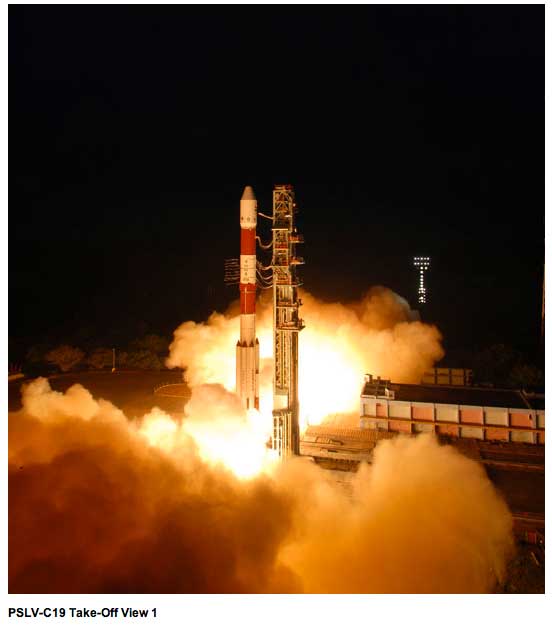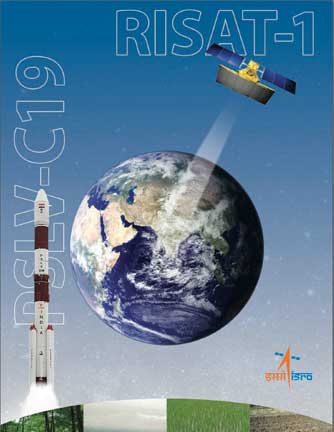 [SatNews] "This is the heaviest satellite put into orbit by the PSLV (polar satellite launch vehicle)..."
[SatNews] "This is the heaviest satellite put into orbit by the PSLV (polar satellite launch vehicle)..."
India successfully put into orbit the first radar-imaging satellite of its own construction Thursday, which will provide crop information and help predict disasters, officials said. The indigenously built RISAT-1, with a life span of five years, will be used for disaster prediction and agriculture forestry. Some speculate that the high resolution pictures and microwave imaging from RISAT-1 could also be used for defense purposes as it can look through the clouds and fog (see more below). The Radar Imaging Satellite Risat-1 took off at 5:47 am (0027 GMT) from the spaceport in Sriharikota, near Chennai on India's east coast, aboard a 321-ton launch rocket. The radar technology can function through clouds, in fog and in darkness, Indian Space Research Organization spokesman S Satish said.
Images from the 1,858-kilogram satellite would be used for agriculture and disaster management, Satish said. "This is the heaviest satellite put into orbit by the PSLV (polar satellite launch vehicle)," Satish added.
"With Risat-1 we can now forecast Kharif season," K Radhakrishnan, chairman of the Indian Space Research Organization, was quoted as saying by IANS. Kharif refers to the crop planted during the rainy season.
Evaluation of the crop from the air is difficult due to frequent cloud cover at that time of year. China's official Xinhua news agency reported India's launch of a "spy satellite" which could be used "for defense purposes" as well as for the applications listed by Indian authorities.
Sources at India's space agency said there was no plan to use the Risat-1 for defense purposes.
India has several optical imaging satellites in orbit, but these do not work through clouds or at night. The country also launched an Israeli-made radar-imaging satellite, the Risat-2, in April 2009, reportedly to meet security requirements.


